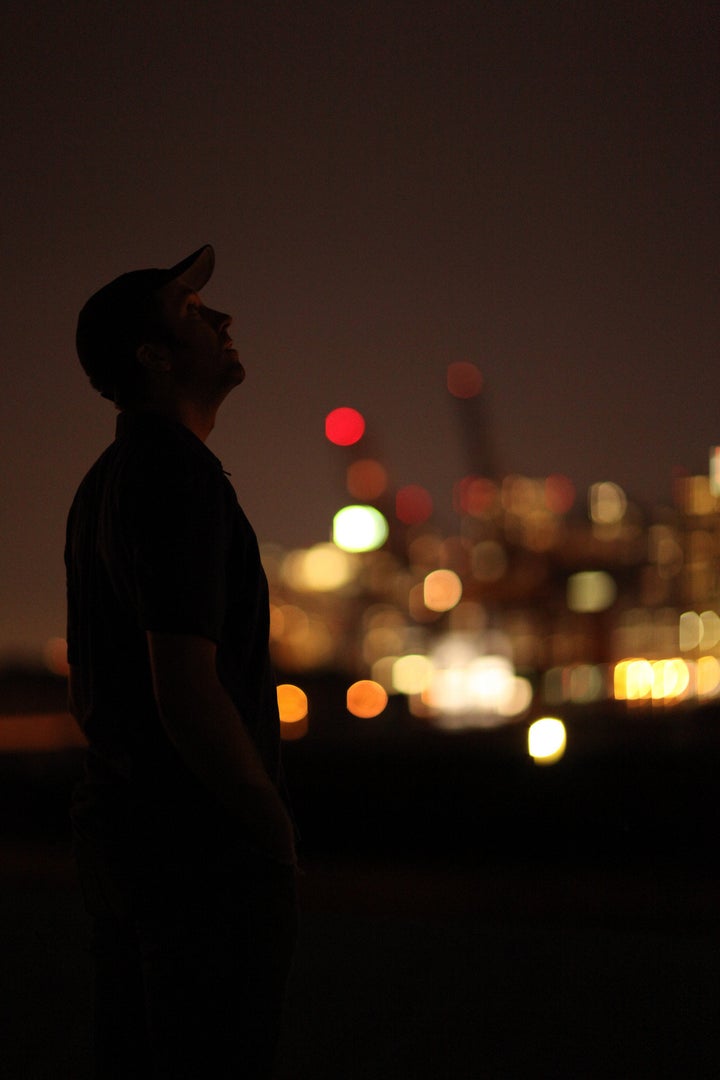
Ian Cheney had no idea that artificial light at night could be unhealthy when he began filming his new documentary, "The City Dark." His interest in what many call "light pollution" stemmed purely from a passion for astronomy, he said, and a question: "What do we lose when we lose the night sky?"
Inner-city Boy Scouts express this concern early in the film. Looking up at the night sky during a troop trip outside of the city, one kid says, "I've never seen the Milky Way."
Yet Cheney, who grew up under the dark skies of rural Maine before moving to the bright lights of New York City, notes that he quickly stumbled upon a growing body of evidence that suggests a possible connection between decreased nighttime darkness and increased risks of certain cancers and other health problems.
"All life on the planet [has evolved] for 3 billion years with a reliable daily cycle of 12 hours of bright broad-spectrum light and 12 hours of dark," said Richard Stevens, a cancer researcher at the University of Connecticut School of Medicine, in "The City Dark."
That period of dark began to erode, however, after the advent of the lightbulb in 1879. More than 130 years later, two-thirds of all humans live under skies polluted by a "luminous fog," notes the film, which is available for free streaming from PBS until August 5.
The technological advancement has brought many benefits to society, from increased productivity to crime protection. Doctors have even employed artificial light to treat conditions such as seasonal affective disorder.
"But light is a two-edged sword," George Brainard, an expert in light's influence on physiology at Thomas Jefferson University, told The Huffington Post. "Too much light at the wrong time or at the wrong intensities or wavelengths can have detrimental effects."
Light also serves a dual purposes for the human body. Much like the ear provides an organ for hearing and a sense of balance, light allows us to see our world while also subtly stimulating a "non-visual pathway into the center of the brain," according to the film. The ebb and flow of light during the day and night triggers fluctuating levels of melatonin. Our circadian rhythm -- the biological mechanism that synchronizes our bodies with the 24-hour cycle -- is regulated by the hormone, and peak production occurs during the night, regardless of whether or not one is asleep. That is, unless the darkness is interrupted by light.
"Light has been sneaking up on people," behind the more widely recognized sources of pollution such as chemicals in the air and water, Stevens told HuffPost. He said that he was essentially laughed at in the mid 1980s when he first proposed that disrupting the body's natural nocturnal production of melatonin might raise the risk of breast cancer. Only in the last few years has the idea gained traction with medical experts. The World Health Organization announced in 2007 that the disruption of the circadian rhythm experienced by shift workers is a "probable" human carcinogen; earlier this summer, the American Medical Association released an official statement warning of light pollution's potentially broad health hazards.
"The issue is taken seriously by the scientific community," said Aaron Blair, a scientist emeritus at the National Institutes of Health and chair of the 2007 WHO committee. "But that doesn't mean there are universal agreements."
Based on the accumulating evidence, Denmark has taken the concern seriously enough to begin compensating women who have developed breast cancer after working night shifts.
While most of the light pollution research so far has focused on breast and prostate cancers, there are also hints that light at night may be implicated in modern epidemics of obesity, heart disease, sleep disorders, childhood cancers and depression.
"The rates of major depression have been increasing over the past several decades, and we can't really explain all the factors that go into that," said Tracy Bedrosian, a doctoral candidate in neuroscience at The Ohio State University and lead author of a study published last week on the possible role of artificial nighttime light. "Meanwhile, people have been exposed to increasing levels of light at night in the same timespan."
Light pollution's threats to public health also go beyond circadian rhythms. One fairly obvious effect is the disruption of sleep. Perhaps more surprising are findings from a recent study in Los Angeles, which suggest that pervasive nighttime illumination could exacerbate air pollution. Not only does electric lighting often rely on polluting power plants, but it can also eliminate natural air-cleansing agents that only survive in the dark.
Further, ecologists have highlighted the large number of other animals affected by nighttime light: disoriented baby sea turtles, birds, even insects.
Much more research is needed to understand how much light at night is too much. Is that street light beaming through your window enough to cause harm, or do you need to be working under the bright lights of a 7-Eleven or an emergency room? Also unclear is the extent of the potential health effects that, for example, a young Boy Scout may encounter over his lifetime. Stevens suggested that nighttime light's potential damage may begin as early as the womb: "Circadian biology is central to development."
Meanwhile, scientists are investigating strategies to circumvent the potentially harmful exposures. "Not all light is equal," says Brainard. Red light doesn't affect melatonin levels like blue light, which has prompted development of blue-light blockers and red night lights. Efforts are also underway to keep light from shining when and where it's not needed.
Cheney said that he has become more cognizant of his own circadian rhythms and avoids light at night with the help of eye shades and new upholstery. "It's lamentable," he said, "that our street lights are designed in such a way that we should spend money installing black-out curtains in our apartments."
